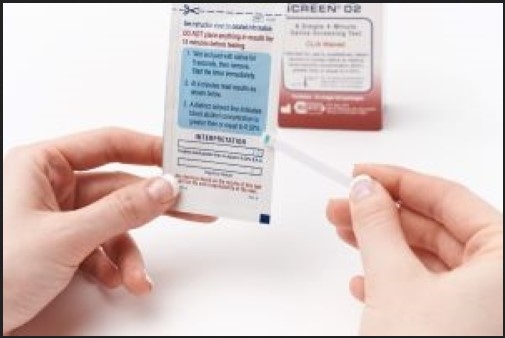Pulled oblique muscles are a common injury that can occur in athletes and non-athletes alike. The oblique muscles are located on the sides of the abdomen and are responsible for trunk rotation and lateral flexion. When these muscles are overstretched or torn, it can cause pain and discomfort in the abdomen and lower back. Symptoms of a pulled oblique muscle can include pain, swelling, bruising, and difficulty moving the affected area. Treatment for a pulled oblique muscle typically involves rest, ice, compression, and elevation. In some cases, physical therapy may be recommended to help with the healing process. This article will discuss the causes, symptoms, and recovery guidelines for a pulled oblique muscle.
Understanding the Causes of Pulled Oblique Muscles: What to Look Out For
Pulled oblique muscles are a common injury that can cause significant pain and discomfort. Oblique muscles are located on the sides of the abdomen and are responsible for rotating the torso and aiding in breathing. When these muscles become strained or torn, it can be difficult to move and perform everyday activities. Understanding the causes of pulled oblique muscles can help you take steps to prevent them from occurring in the future.
The most common cause of pulled oblique muscles is overuse. This can occur when you engage in activities that require repetitive motions, such as running, swimming, or playing sports. When you perform these activities, the muscles become fatigued and can become strained or torn. Additionally, if you do not warm up properly before engaging in physical activity, you are more likely to experience a pulled oblique muscle.
Another cause of pulled oblique muscles is poor posture. If you sit or stand in an awkward position for an extended period of time, it can put strain on the muscles and cause them to become strained or torn. Additionally, if you are overweight, the extra weight can put additional strain on the muscles, making them more prone to injury.
Finally, pulled oblique muscles can also be caused by sudden, forceful movements. If you make a sudden, jerking motion with your torso, it can cause the muscles to become strained or torn. Additionally, if you lift a heavy object without using proper form, it can also cause the muscles to become strained or torn.
In order to prevent pulled oblique muscles, it is important to warm up properly before engaging in physical activity. Additionally, it is important to maintain good posture and use proper form when lifting heavy objects. Finally, it is important to be aware of your body and stop any activity that causes pain or discomfort. If you experience any pain or discomfort in your oblique muscles, it is important to seek medical attention as soon as possible.
Diagnosing and Treating Pulled Oblique Muscles: Symptoms and Recovery Guidelines
Pulled oblique muscles are a common injury that can cause significant pain and discomfort. The oblique muscles are located on the sides of the abdomen and are responsible for trunk rotation and side bending. When these muscles are strained or torn, it can be difficult to perform everyday activities. It is important to recognize the symptoms of a pulled oblique muscle and to seek medical attention if necessary. This article will provide an overview of the symptoms, diagnosis, and treatment of pulled oblique muscles, as well as recovery guidelines.
Symptoms
The most common symptom of a pulled oblique muscle is localized pain in the abdomen. This pain may be sharp and sudden or may develop gradually over time. Other symptoms may include tenderness, swelling, bruising, and difficulty moving the affected area. In some cases, the pain may radiate to the back or chest.
Diagnosis
A doctor can diagnose a pulled oblique muscle by performing a physical examination and asking questions about the patient’s medical history. Imaging tests such as X-rays or MRI scans may also be used to confirm the diagnosis.
Treatment
Treatment for a pulled oblique muscle typically involves rest, ice, compression, and elevation (RICE). Over-the-counter pain medications such as ibuprofen or acetaminophen may also be used to reduce pain and inflammation. In some cases, a doctor may recommend physical therapy or a brace to support the affected area.
Recovery Guidelines
The recovery process for a pulled oblique muscle can take several weeks or months, depending on the severity of the injury. During this time, it is important to rest the affected area and avoid activities that may cause further injury. Gentle stretching and strengthening exercises may be recommended to help restore range of motion and strength. It is also important to follow any instructions provided by a doctor or physical therapist.
In conclusion, pulled oblique muscles can cause significant pain and discomfort. It is important to recognize the symptoms and seek medical attention if necessary. Treatment typically involves rest, ice, compression, and elevation, as well as over-the-counter pain medications. During the recovery process, it is important to rest the affected area and follow any instructions provided by a doctor or physical therapist.
Conclusion
Pulled oblique muscles can be a painful and debilitating injury, but with proper treatment and recovery guidelines, it is possible to make a full recovery. It is important to rest the affected area, apply ice, and take anti-inflammatory medications to reduce pain and swelling. Stretching and strengthening exercises can help to restore strength and flexibility to the affected area. With proper care and attention, a pulled oblique muscle can be managed and healed.

